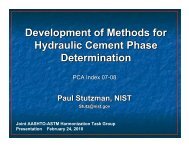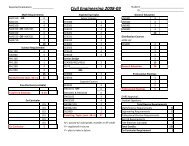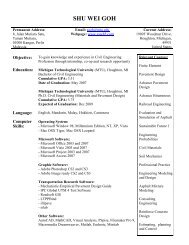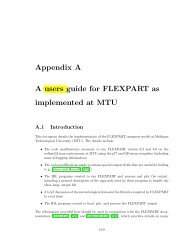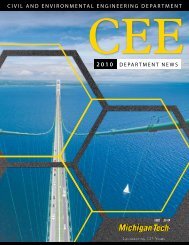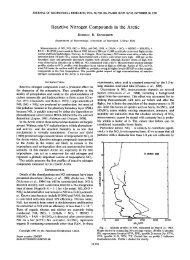Evaluation of Septic Tank and Subsurface Wetland for
Evaluation of Septic Tank and Subsurface Wetland for
Evaluation of Septic Tank and Subsurface Wetland for
Create successful ePaper yourself
Turn your PDF publications into a flip-book with our unique Google optimized e-Paper software.
Evidence from 14 horizontal flow SSF wetl<strong>and</strong>s operating in the United States indicated<br />
deep roots <strong>and</strong> long HRT improved ammonia removal through nitrification <strong>and</strong><br />
denitrification (EPA, 1993). Ammonium removal in pilot scale SSF wetl<strong>and</strong>s was found<br />
to be better in beds planted with s<strong>of</strong>tstem bulrush than beds without plants (George, et al.,<br />
2000). This evidence supports the root zone concept <strong>of</strong> sufficient oxygen <strong>for</strong> biological<br />
nitrification being supplied to the wastewater by the roots <strong>of</strong> the aquatic plants. Another<br />
report stated that full-scale SSF wetl<strong>and</strong>s built <strong>for</strong> ammonia removal per<strong>for</strong>med below<br />
expectations <strong>and</strong> some other technology besides the single pass horizontal SSF wetl<strong>and</strong> is<br />
required if ammonia removal is critical. It was concluded that plants cannot contribute a<br />
significant amount <strong>of</strong> oxygen to a SSF wetl<strong>and</strong> (EPA, 2000).<br />
Nitrification is <strong>of</strong>ten the limiting step in converting ammonia to nitrogen gas because <strong>of</strong><br />
the low concentration <strong>of</strong> dissolved oxygen (Reed et al., 1995). Biological nitrification<br />
occurs under optimal conditions <strong>for</strong> growth <strong>and</strong> sustenance <strong>of</strong> the aerobic autotrophic<br />
nitrifying bacteria. These conditions include the following:<br />
o Carbon Source<br />
A BOD <strong>of</strong> at least 15 – 20 mg/l is recommended (Reed et al., 2001).<br />
Too much BOD will result in competition with heterotrophic bacteria<br />
(Tchobanoglous et al., 2003).<br />
o Temperature<br />
Optimum temperature is 30 – 35ºC with little nitrification occurring<br />
below 5ºC or above 40ºC (Hammer et al., 1994). Microbes will work twice as<br />
fast at 24ºC compared to 12ºC.<br />
o pH<br />
Optimal range is 7.5 to 8.0 but reasonable nitrification can occur at 7.0<br />
(Tchobanoglous et al., 2003).<br />
o Dissolved Oxygen (DO)<br />
Rate <strong>of</strong> nitrification is reduced at DO concentrations below 2 mg/l (Hammer et<br />
al., 1994) <strong>and</strong> the conversion <strong>of</strong> nitrite to nitrate is greatly inhibited at DO<br />
concentrations below 0.5 mg/l (Tchobanoglous et al., 2003).<br />
45



